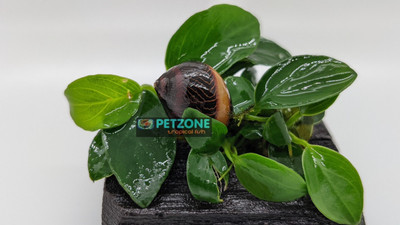Unveiling the Nerite Snail: A Fascinating Aquatic Companion for Your Aquarium
Posted by Max Gandara on on 5th Mar 2024
Appearance and Species Diversity:
Nerite snails belong to the family Neritidae, and they boast an array of captivating colors and patterns. The most common species include Neritina natalensis, Neritina pulligera, and Neritina reclivata, each distinguished by its own distinctive shell design and coloration. The shells of Nerite snails are often adorned with intricate patterns, stripes, and spots, making them aesthetically pleasing additions to aquariums.
Habitat and Distribution:
Nerite snails are native to freshwater and brackish habitats, including rivers, streams, and coastal areas. They are widely distributed across tropical regions, with some species found in Southeast Asia, Africa, and the Americas. In the wild, Nerite snails are commonly found grazing on algae-covered surfaces, contributing to their reputation as excellent algae-eaters.
Behavior and Feeding Habits:
One of the notable characteristics of Nerite snails is their peaceful and non-aggressive nature. They are generally content to explore the surfaces of rocks, driftwood, and aquarium glass, in search of algae and biofilm to feed on. The scavenging behavior of Nerite snails plays a crucial role in controlling the growth of unsightly algae in the aquarium, promoting a cleaner and healthier environment for other tank inhabitants.
Care Requirements:
Nerite snails are considered low-maintenance and are suitable for both novice and experienced aquarium keepers. To ensure their well-being, it is essential to provide them with a stable and clean environment. Key care requirements include:
- Water Parameters: Nerite snails thrive in water with a pH range of 7.5 to 8.5 and a temperature between 72°F to 78°F (22°C to 26°C). Maintaining stable water parameters is crucial for their health.
- Tank Setup: Provide a well-aerated aquarium with ample hiding places and surfaces for the snails to explore. A substrate with smooth gravel or sand is preferred to prevent damage to their delicate foot.
- Diet: While Nerite snails primarily feed on algae, it's advisable to supplement their diet with algae wafers or blanched vegetables like zucchini or spinach. Ensure a balanced and varied diet to meet their nutritional needs.
- Compatibility: Nerite snails are compatible with a wide range of freshwater fish and invertebrates, but caution should be exercised with aggressive species that may harm them.
Benefits for Aquariums:
Nerite snails offer several benefits to aquarium ecosystems:
- Algae Control: Their voracious appetite for algae helps keep aquarium surfaces clean, preventing the overgrowth of unsightly green films.
- Biological Balance: Nerite snails contribute to the biological balance of the tank by producing waste that serves as a natural fertilizer for live plants.
- Low Reproduction Rate: Unlike some other snail species, Nerite snails have a low reproduction rate in freshwater, reducing the risk of population explosions and overstocking.
In conclusion, the Nerite snail is a fascinating and beneficial addition to freshwater aquariums. With their captivating appearance, peaceful nature, and effective algae-eating habits, Nerite snails contribute to the overall health and aesthetics of aquarium ecosystems. By providing the appropriate care and environment, aquarists can enjoy the charm and functionality of these delightful gastropods in their tanks.

